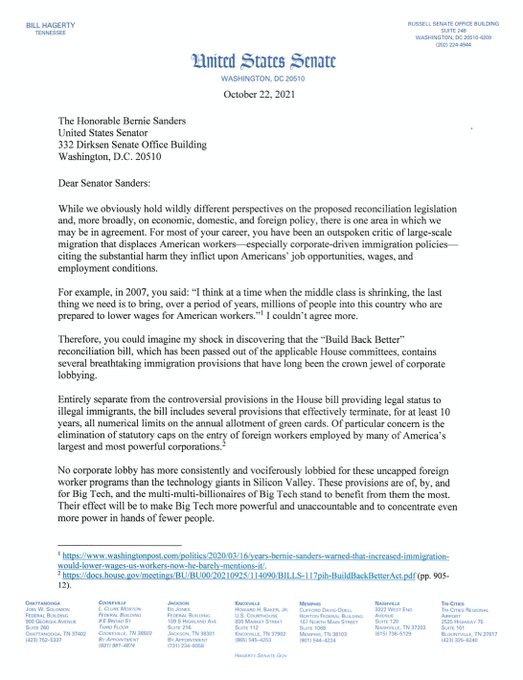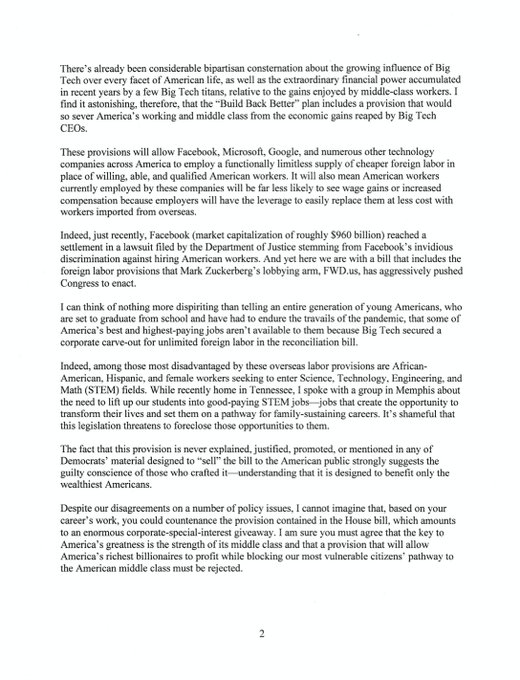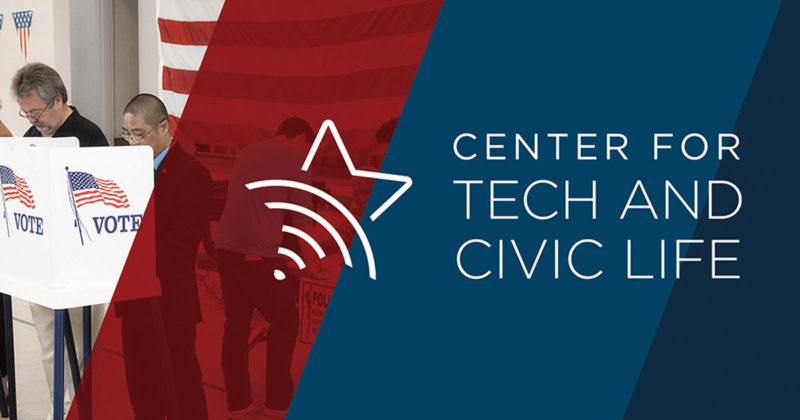The radical provisions hidden in their tax-and-spend spree….Thank you Senator Hagerty. Have you called Washingon yet?
Category Archives: Legislation
Meet The White Coat Waste Project and Poor Harvey
The poor Beagles….animal abuse and death…you’re paying for it too.
.White Coat Waste Project is a taxpayer watchdog group representing more than 2 million liberty-lovers and animal-lovers who all agree: taxpayers shouldn’t be forced to pay over $20 billion every year for wasteful and cruel experiments on dogs, cats, monkeys and other animals.
 . There are even beagle puppy farms….
. There are even beagle puppy farms….
And it could be that other deadly disgusting nefarious testing is going on with the approval of our own government agencies….check this out —>
In part: According to the most recent reports, approximately 60,000 dogs are used in testing and research in the United States each year, with an additional 6,500 dogs reported as being held in laboratories but not yet used. The Michigan lab alone used thousands of beagles and hounds last year in testing for companies seeking federal approval for potentially poisonous products, like pharmaceuticals and pesticides (fungicides). Harvey and the other dogs who were at the lab during our investigation were bought from two major breeders, Marshall BioResources and Covance Research, which sell specifically to laboratories. Marshall had 22,000 dogs at its facility in New York at the time of a U.S. Department of Agriculture inspection in 2018. Beagles are most commonly used in research because of their docile nature.
The Charles River Laboratories now has 36 beagles in its facility for a pesticide test commissioned by Dow AgroSciences (now known as Corteva), and we need your help to get those beagles out.
The test, which involves force-feeding the dogs with various doses of a fungicide each day for a full year, has been universally deemed as unnecessary, including by Dow scientists. Dow itself has actively advocated for eliminating this test in numerous countries, and we have been grateful for Dow’s work in the past. When we reached out to the company, we were told the test is required in Brazil. The country has taken steps to remove the one-year dog test from its pesticide requirements, but the changes haven’t been formally adopted yet. When Humane Society International swiftly contacted Brazilian regulatory authorities, we received a response that they were readily granting waiver requests from companies to forego this test. Dow asked for a more formal assurance from Brazil to end the dog study already underway, which HSI obtained, but Dow’s regulatory affairs division now says they need additional confirmation that their specific pesticide product will be approved without the dog study results before ending the study.
Our discussions with Dow have hit an impasse and meanwhile, time is running out for the Dow beagles. Unless we act fast, these 36 dogs will likely die for a test that is not needed.
It is too late to help Harvey and the other dogs seen during our investigation. But with your help, we can make a difference for these 36 dogs still at Charles River. Please join us in asking Dow to immediately end the test and release the beagles to us. We will work on getting them placed into loving homes, even as we continue to work toward the day when invasive testing on dogs becomes a thing of the past.
Supply Chain Crisis and Where is the Defense Production Act?
What is the Defense Production Act?
The Defense Production Act is the primary source of presidential authorities to expedite and expand the supply of materials and services from the U.S. industrial base needed to promote the national defense. DPA authorities are available to support: emergency preparedness activities conducted pursuant to title VI of the Stafford Act; protection or restoration of critical infrastructure; and efforts to prevent, reduce vulnerability to, minimize damage from, and recover from acts of terrorism within the United States. DPA authorities may be used to:
- Require acceptance and preferential performance of contracts and orders under DPA Title I. (See Federal Priorities and Allocations System (FPAS).)
- Provide financial incentives and assistance (under DPA Title III) for U.S. industry to expand productive capacity and supply needed for national defense purposes;
- Provide antitrust protection (through DPA voluntary agreements in DPA Title VII) for businesses to cooperate in planning and operations for national defense purposes, including homeland security.
But national security? Yes. We remain the midst of the Covid 19 pandemic and those affected could and often are our protectors, not only medically but when it comes to legally or militarily.
While we are fretting over shortages and necessities in our daily lives there are two real areas of major concern, they are medicines and micro-chips (semiconductors) used for advanced technology of many varieties.

Basic medicines in use either by prescription or over the counter are manufactured in Asia, mostly China that is. It is a fact we learned in the early days of the pandemic. Imagine now that we are faced with a shortage of antibiotics, insulin, aspirin or Lasix and Dyazide. Could we once again face personal protection equipment shortages?

When it comes to semiconductors, the following is important to know:
In part from a senate committee: To mitigate supply chain risks and ensure that semiconductors used in sensitive military systems do not have malware embedded in them, in 2004 the Department of Defense established the “Trusted Foundry Program.” Under this program the government identifies companies deemed secure and trustworthy enough to produce chips exclusively for the military. Two facilities currently operate under this program, one in Vermont and one in New York.
The program only produces a small percentage of the nearly 2 billion semiconductors DOD acquires each year. Some observers have expressed concern that the trusted foundries are falling behind technologically compared to commercial fabrication facilities in East Asia. This could leave the U.S. military at a technological disadvantage to China and other countries that buy superior chips.
In 2017, the Defense Advanced Research Projects Agency launched the Electronics Resurgence Initiative, which seeks to address market and technological trends and challenges in the microelectronics sector.
Sounds shaky right? It is as we need results and we need them now. So where is that order by the Biden administration for the Defense Production Act which would jump start real action in all the various reasons for the log jam at ports around the United States? There is no one single reason for the cargo ships being stacked up in Long Beach, Los Angeles, Port Houston, Savannah to name a few.
The United States can relieve the cargo pressures immediately by deploying the National Guard, signing waivers on regulations and by stopping all the financial payments that encourage people to simply not go to work.
The shortages hitting countries around the world
A “perfect storm” in China is hitting shoppers and businesses at home and overseas.
It is affecting everything from paper, food, textiles and toys to iPhone chips, says Dr Michal Meidan from the Oxford Institute for Energy Studies.
She says these items “may end up being in short supply this Christmas”.
Then there is the Department of Transportation and the Secretary has been absent….his involvement in this?
Maritime administration –>
U.S. maritime ports are critical links in the U.S. domestic and international trade supply-chain. Ports serve as centers of commerce where freight and commodities are transferred between cargo ships, barges, trucks, trains, and pipelines.
The Port Infrastructure Development Program supports the efficient movement of commerce upon which our economy relies through discretionary grant funding that helps strengthen, modernize, and improve our country’s maritime systems and gateway ports. Grants are awarded on a competitive basis and support the Nation’s long-term economic vitality.
Port Infrastructure Development grants provide planning, operational and capital financing, and project management assistance to improve port capacity and operations.
Authorization History
The Port Infrastructure and Development Program was authorized by Congress as part of the National Defense Authorization Act for Fiscal Year 2010 (Public Law 111-84). The legislation states that “The Secretary of Transportation, through the Maritime Administrator, shall establish a port infrastructure development program for the improvement of port facilities.”
The law specifically authorizes the Administrator to:
- Receive funds provided for the project from Federal, non-Federal, and private entities that have a specific agreement or contract with the Administrator to further the purposes of this subsection;
- Coordinate with other Federal agencies to expedite the process established under the National Environmental Policy Act of 1969 (42 U.S.C. 4321 et seq.) for the improvement of port facilities to improve the efficiency of the transportation system, to increase port security, or to provide greater access to port facilities;
- Seek to coordinate all reviews or requirements with appropriate local, State, and Federal agencies; and
- Provide such technical assistance and financial assistance, including grants, to port authorities or commissions or their subdivisions and agents as needed for project planning, design, and construction.
The authorizing legislation also established a Port Infrastructure Development Fund for use by the Administrator in carrying out projects under the program. The fund is available for the Administrator to:
- Administer and carry out projects under the program;
- Receive Federal, non-Federal, and private funds from entities which have specific agreements or contracts with the Administrator; and
- Make refunds for projects that will not be completed.
There are also additional legislative provisions for the crediting and transfer of monies into the fund.
Rigged: The Other Facts About the 2020 Election
Two of the most dangerous people of the 2020 election were Mark Zuckerberg and Marc Elias. We all know Zuckerberg but many need to be reminded who Marc Elias really is.
Marc Elias the Democratic National Committee’s election lawyer and legal adviser to Hillary Clinton’s 2016 campaign, filed more than 50 lawsuits around the country challenging state election laws in advance of the 2020 presidential election.
In a 2018 Tweet, President Donald Trump referred to Elias as the Democrats’ “best Election stealing lawyer.”

Though most of the state laws he challenged have been on the books for years, Elias went full steam ahead asking courts to overrule state election laws, force states to count ballots that came in after Election Day, or force states to have unattended ballot collection boxes.
Elias chairs the political law group for the progressive, Seattle-based firm Perkins Coie, “which has had a stranglehold on Democratic legal work for years,” National Review noted in a Nov. 3 analysis.
Since 2019, Perkins Coie has been paid at least $41 million for its political work by Democratic-affiliated organizations, according to Federal Election Commission records. Republican lawyers say that is likely just a fraction of what Perkins Coie has received, because it doesn’t include legal work for many left-wing nonprofits.
Elias was also a key player in the Russia collusion hoax. As the attorney for both the DNC and Clinton campaign, he helped bankroll research by Fusion GPS that created the bogus “Steele dossier” used by the FBI to obtain FISA warrants to spy on the Trump campaign during the 2016 race. source
***
In “Rigged,” author Mollie Hemingway lays out what amounts to a fascinating alternative to the “stolen” charge. She presents a strong case that the $419 million that Facebook founder Mark Zuckerberg ostensibly spent to get out the vote was actually used by Democrat activists to infiltrate local election operations and take over jobs government workers were supposed to do.
Hemingway, a senior editor at The Federalist and a Fox commentator, shows how two Zuckerberg nonprofits used their unprecedented deep pockets to line up left-wing groups in key cities that in turn hired poll workers, collected absentee ballots and cured those with errors.
In Green Bay, Wisconsin, the Democratic mayor outsourced the planning and managing of the election to these activists. Hemingway cites an e-mail from the mayor’s chief of staff saying, “I am taking all of my cues” from one of the Zuckerberg groups.
The city clerk, nominally in charge of the election, was reportedly unhappy with the changes, went on leave shortly before election day and soon resigned.
As Hemingway puts it in excerpts published by The Post, “It was a genius plan. And because no one ever imagined that a coordinated operation could pull off the privatization of the election system, no laws were built to combat it.”
Texas researcher William Doyle crunched the numbers showing how the nonprofits concentrated in areas Biden won, often spending three or four times as much money per voter as they spent in districts Trump won.
“The 2020 election wasn’t stolen,” Doyle concluded. “It was likely bought by one of the world’s wealthiest and most powerful men pouring his money through legal loopholes.”
***
Back in December of 2020, this site published two items exposing these operations.
Georgia/The Fulton County Board of Commissioners voted to accept a $6.3 million grant from the Mark-Zuckerberg funded Center for Technology and Civic Life “Safe Elections” project at a September 2, 2020 board meeting. It proceeded without asking a single question about the name of the group providing the funding, the origin of the funding, or the details of what the funding would be used for.
It begins with the Center for Technology and Civic Life (CTCL), which received nearly $400 million from Zuckerberg. Zuckerberg began the sizeable donations is September boost resources for local election officials, such as additional polling places and ballot drop boxes. Four federal lawsuits were filed in late September by Michigan’s Election Integrity Fund, by the Wisconsin Voters’ Alliance, by the Minnesota Voters’ Alliance, and by two Pennsylvania congressional candidates and several state house members. The lawsuits contend federal law prohibits local governments from accepting private federal election grants. Zuckerberg won the lawsuits in each case, so far.
The lawsuits focus on the Center for Tech and Civic Life spending about $26 million in grants across 12 cities in Michigan, Pennsylvania, Minnesota and Wisconsin, which combined cast over 75% off their two million votes in favor of Hillary Clinton in the 2016 election, according to the plaintiffs. source
Then in June of 2021, is the other item:
In exchange for the money, elections divisions agreed to conduct their elections according to conditions set out by the CTCL, which is led by former members of the New Organizing Institute, a training center for progressive groups and Democratic campaigns.
A CTCL partner, the Center for Civic Design, helped design absentee ballot forms and instructions, crafted voter registration letters for felons and tested automatic voter registration systems in several states, working alongside progressive activist groups in Michigan and directly with elections offices in Georgia and Utah.
Still other groups with a progressive leaning, including the Main Street Alliance, The Elections Group and the National Vote at Home Institute, provided support for some elections offices.
“COVID-19 response” grants of varying amounts to 2,500 municipalities in 49 states.Facebook, with the CTCL, was also part of the effort, providing a guide and webinar for election officials on how to engage voters. Included were directions to report “voter interference” to Facebook authorities. The company also provided designated employees in six regions of the U.S. to handle questions. Together, the groups strategically targeted voters and waged a voter assistance campaign aimed at low-income and minority residents who typically shun election participation, helping Democratic candidates win key spots all over the U.S.
The little-explored roles of CTCL and other such groups emerged in emails and other records obtained by RealClearInvestigations and public documents secured by conservative litigants and groups, including the Foundation for Government Accountability, which has filed more than 800 public records requests with elections offices accepting the grants.
Previously, the Zuckerberg-funded effort has been described in generally positive terms, notably when NPR reported in December on “How Private Money From Facebook’s CEO Saved The 2020 Election” — in the face of the coronavirus pandemic, President Trump’s doubts about the legitimacy of the process and “Congress’ neglect.”
In 2018, RCI reported that a New York University School of Law program funded by billionaire Michael Bloomberg had placed environmentally minded lawyers in the offices of Democratic state attorneys general to challenge Trump administration policies. And examples of private efforts to steer cash-strapped public education are numerous, from the Koch charities on the right to more recent race-conscious programs on the left emphasizing the legacy and centrality of white racism in society.Zuckerberg did not respond to an emailed request from RCI for comment. In a post-election interview, he praised Facebook’s security work during the election and singled out its policing of “misinformation.” He noted working with polling officials to watch for information that might lead to “voter suppression” and said Facebook had strengthened its enforcement “against militias and conspiracy networks like Q-Anon.”
The Cancelled Hypersonic Development has the U.S. Scrambling until the Space Force
Primer: China is signaling that a stunning new missile test that reportedly surprised U.S. intelligence officials was not designed to accelerate an arms race with the West but rather to grant Beijing a strategic advantage to seize control of the Taiwan Straits and other hotly contested territory in its region. . source
. source
The country’s English-language Global Times, considered a mouthpiece for the Chinese Communist Party, did not directly confirm details from a bombshell report in the Financial Times over the weekend that Beijing had successfully tested a nuclear-capable hypersonic missile in August. However, after repeating many of the report’s key details in an op-ed released late Sunday, it added that, if true, they amount to “a new blow to the U.S.’ mentality of strategic superiority over China.”
“China’s military buildup will focus on the Taiwan Straits and the South China Sea,” the op-ed stated, after claiming China does not seek to challenge America’s dominant military position globally. “It is inevitable that China will take an upper hand over the U.S. military strength in these areas thanks to the geographical proximity and the continuous increase of China’s input.” More detail here.
***
Although there were challenges on advanced weapons systems development, it was not until the Trump administration was there direction and funding included too by the establishment of the Space Force.
Lockheed Martin expects to have hypersonics sales of USD1.5 billion in 2021, up 25% from USD1.2 billion in 2020, said Kenneth Possenriede, the US defence contractor’s chief financial officer.
Several Lockheed Martin programmes are poised to achieve key development milestones or ramp up production over the next few years, fuelling revenue increases. Although one programme, the Hypersonic Conventional Strike Weapon (HCSW), was cancelled by the US Air Force last year, the funding has shifted to other Lockheed Martin efforts, said Possenriede.
“We had a couple risk retirements at the end of the year, so our programmes are performing,” he said.
Lockheed Martin is also growing its hypersonics revenue through acquisitions, such as its November 2020 purchase of the Hypersonics portfolio of US-based Integration Innovation Inc (i3). The proposed acquisition of US-based rocket engine maker Aerojet Rocketdyne for USD4.4 billion would also bolster Lockheed Martin’s hypersonics capabilities.
Possenriede made his comments as Lockheed Martin reported that its total net sales rose 7.3% to USD17 billion in the fourth quarter of 2020. All four of the company’s business segments saw strong sales gains. Net earnings totalled USD1.8 billion in the fourth quarter, up 19.6% from the same period in 2019.
Despite operational and supply chain challenges caused by the coronavirus, Lockheed Martin’s net sales for 2020 climbed 9.3% to USD65.4 billion, while its net earnings jumped 9.7% to USD6.8 billion. The company ended the year with a USD147.1 billion backlog, up more than USD3 billion from 2019. source
***
RELATED READING: R&D of advanced weapons systems to compete with China
Known as HCSW (pronounced “Hacksaw”) was defunded in order to shift resources to its other program, the Air-launched Rapid Response Weapon (ARRW). Both prototypes are designed by Lockheed Martin Corp.
“Due to budget priorities, the Air Force down-selected to one hypersonic weapon prototyping effort this year,” spokeswoman Ann Stefanek said. Instead, she said, the service will concentrate efforts on ARRW, which is “on track for an early operational capability in fiscal 2022.”
Given the complexity of the threat, and the pace at which potential adversaries are evolving hypersonic weapons, it is by no means surprising that Mozer said Space Force and Air Force Research Laboratory are working closely with the Navy, Defense Advanced Research Projects Agency and Missile Defense Agency to share developmental data and technologies with a mind to maturing interoperable, multi-domain defensive systems able to track and ultimately deter hypersonic attacks.




